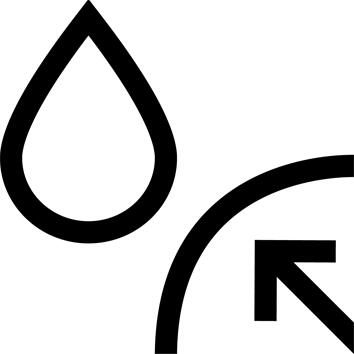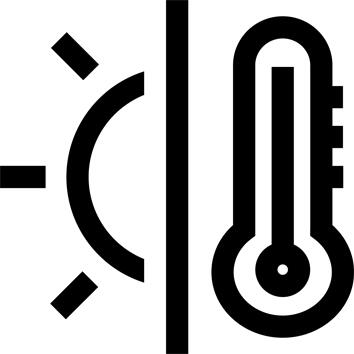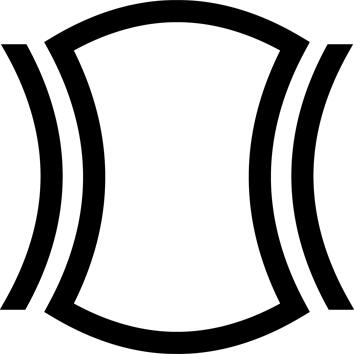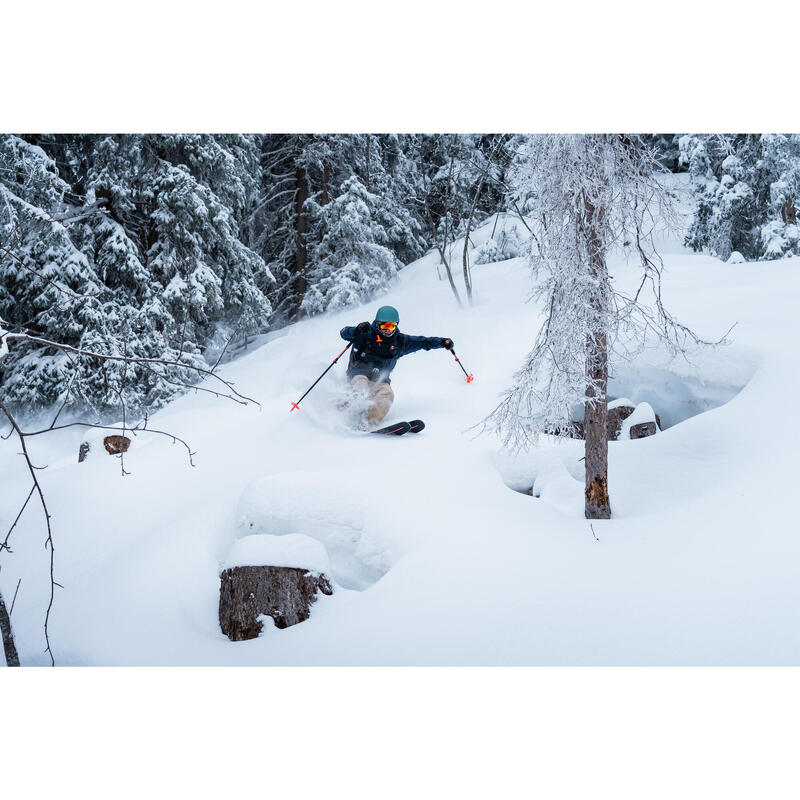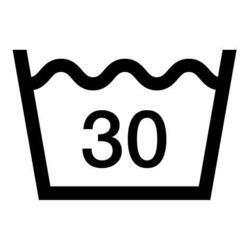Additional functions
Hood over helmet designed for maximum protection, while maintaining your freedom of movement.
Adjustable in 3 dimensions in a single movement, thanks to a single tightening system located behind the head.
Wrist and sleeve tightening to limit air and snow ingress.
Jacket bottom and snow skirt tightening also to limit air and snow ingress.
Component impermeability
We measure a fabric's resistance to water pressure expressed in mm water column (test based on ISO 811). The higher the pressure, the more waterproof the fabric. A component with a waterproof rating of 5000 mm will therefore withstand the pressure exerted by 5000 mm of water.
Water-repellent
A fabric's water repellency is its ability to let water slide off its surface without absorbing it. This means the fabric doesn't become waterlogged, remaining light, breathable and warm. Water repellency is achieved by a treatment applied to the outside of the fabric. This treatment needs to be renewed over the life of the garment (we recommend every 3 washes). All Wedze jackets are water-repellent.
Component breathability
Pour savoir si un tissu est respirant, on mesure sa résistance évaporative RET (test basé sur la norme ISO 11092).
Plus la résistance est faible, plus le tissu laisse s’échapper la vapeur d'eau générée par le corps en activité et plus il est respirant.
Par exemple :
RET < 9 = tissu extrêmement respirant
9 < RET < 12 = tissu très respirant
12 < RET < 20 = tissu respirant
RET > 20 = tissu peu ou pas respirant
What is a membraned or coated component?
The coating is like a paint applied to the inside of the fabric, making the component waterproof yet breathable. The membrane is a kind of very thin plastic film (polyurethane) that requires a lining to protect it and make the component waterproof yet breathable. It has the advantage of being more flexible, lighter, more resistant and often more breathable than coating.
How do you make a waterproof garment?
A garment's waterproofness is linked to its components, the watertightness of seams and assembly design.
The use of waterproof zips or flaps on zips (covering zips with a flap of waterproof fabric).
Waterproofing / Shower test
This garment has been validated in a shower test under 60 l of water/m²/hour for 2 hours. This test reproduces the conditions of a mountain shower.
How do you make a breathable garment?
In addition to the breathability of our fabrics, we use technical solutions (zips, vents, mesh, etc.) to improve the overall ventilation of our jackets and pants designed for freeride skiing. These ventilation systems both regulate the temperature inside the garment and facilitate the evacuation of perspiration generated by the body during exercise.
What is the RECCO® System?
100% of our freeride jackets and pants are equipped with the RECCO® system.
With RECCO® technology you can be located in the event of an avalanche accident. Equipped with RECCO® reflectors, a buried person can be located quickly and accurately by the rescue services using the RECCO® detector. RECCO® reflectors do not replace the use of a avalanche beacon. Complementary in function, RECCO® technology increases the chances of being found in time.
Washing your waterproof garment tutorial.
We advise you to follow this protocol every time you wash your garment, in order to preserve all its technical characteristics.
Link: https://youtu.be/rh4GLwALgBM
After three washes, we recommend reactivating the water-repellency by spray or impregnation treatment.
To help you choose the right size
The model wears a L and measures 180 cm.
Her measurements are:
Waist: 85 cm
Hips: 100 cm
Chest: 100 cm
Weight
S : 0.982 kg
M : 1.018 kg
L : 1.06 kg
XL : 1.115 kg
2XL : 1.186 kg
